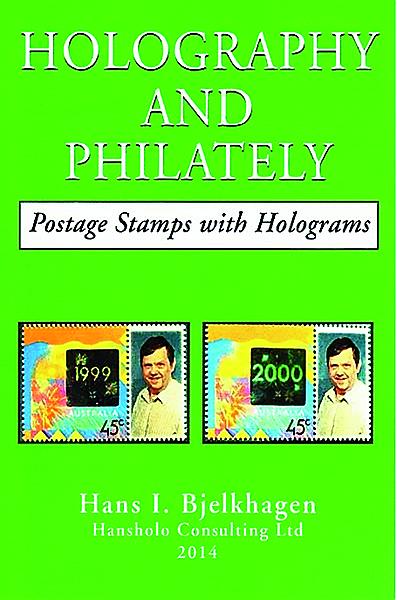World Stamps
New book compiles information about hundreds of holographic stamps, stationery

Collector Hans Bjelkhagen has turned his fascination with holographic stamps into a new book.
In 1988, Austria broke new ground in the stamp world when it issued the first stamp featuring a holographic image (Scott 1441).
The hologram on the 8-schilling stamp pays tribute to Austrian exports and pictures a stylized “A” with “Austria” printed across it, and the words “Made In Austria” beneath.
If holographic stamps are your thing, you will be pleased to know that a new book devoted to them is now available: Holography and Philately Postage Stamps with Holograms, by Hans I. Bjelkhagen.
According to the author, approximately 80 countries have issued some 450 holographic stamps and postal stationery items during the past 26 years. These eye-catching stamps are listed and described chronologically in the third chapter.
In the introduction, Bjelkhagen details what is included: “A description of each stamp is provided together with color photographs of all postage stamps. This goes also for miniature and souvenir sheets.
“In addition, official and special first-day covers (FDCs) are presented and described.
“It is common that a cachet hologram has been attached to an envelope (FDC or commemorative one) when normal postage stamps are issued. Such FDCs are also included.”
FDC collectors also will find the book a useful reference because of the details that Bjelkhagen provides.
Some nonpostal stamps, such as cinderellas, also are featured. Other items, such as telephone cards, are beyond the scope of the book, Bjelkhagen writes.
“In this book,” he continues, “the emphasis is placed on the holograms and their different types, on the hologram images, the producers and the story behind them.”
Almost every page is filled with color photos of the stamps. Precise sidelighting was used to draw out the details of the holograms, which often appear subdued or flat in a standard photograph.
I noted one weakness with the softcover review copy I received — the glued binding is susceptible to cracking if the book is opened too widely. This could cause pages to loosen and fall out.
Among the book’s strengths are the two tables in the back that list the hologram stamps chronologically and by country.
Each table includes the issue date, country, type of stamp, size (in millimeters), denomination, issue quantity (called “edition” in the tables) when known, perforation gauge and Scott catalog number.
Two chapters are devoted to other postal and philatelic items bearing holograms, and 3-D imaging techniques other than holography.
To purchase a copy online, visit the Amazon, Barnes and Noble, or Xlibris web sites. Additional information is available from the websitexlibrispublishing.co.uk.
MORE RELATED ARTICLES
Headlines
-
Postal Updates
Oct 7, 2024, 5 PMUSPS plans to raise postal rates five times in next three years
-
US Stamps
Oct 7, 2024, 3 PMMcMurtrie dismissed as APS education director following Sept. 21 arrest
-
US Stamps
Oct 7, 2024, 12 PMVasiliauskas named president of Mystic Stamp Co.
-
US Stamps
Oct 6, 2024, 5 PMApgar souvenir card available





